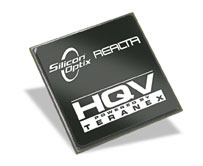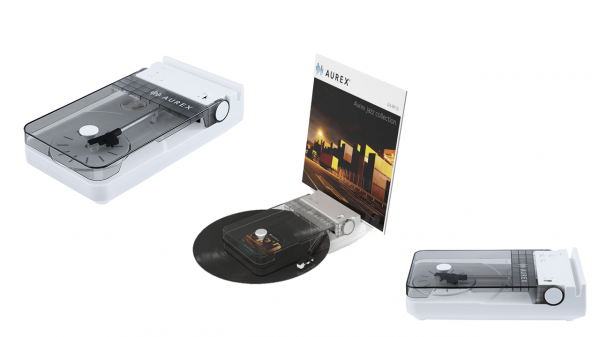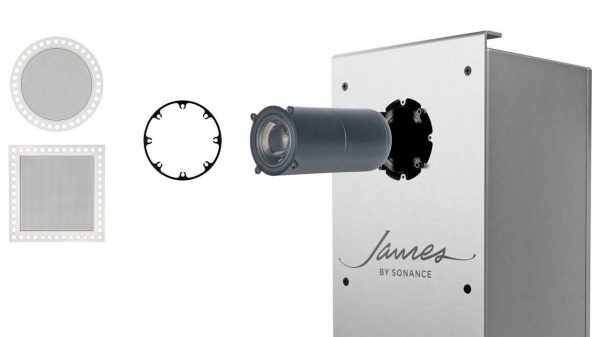Video Engine by Silicon Optix for Superb Big-Screen Picture Quality
MONTREAL, QUEBEC, June 26, 2006 — Algolith, a leading developer of video image enhancement solutions, announces it has begun shipments in North America and Europe of the highly anticipated Dragonfly Home Theater Processor/Scaler, featuring the powerful Realta HQV Video Engine by Silicon Optix, the leading supplier of advanced video/image digital processing integrated circuits.
The elegantly designed Dragonfly embodies Algolith’s vision of providing superlative image quality significantly beyond anything now available. Further advancing Algolith’s position at the forefront of digital image enhancement, the Dragonfly represents a collection of engineering achievements that reach new heights and the highest level of design.
A must for videophiles passionate about their high-performance Home Theaters and entertainment systems, the Dragonfly will up- or down-scale, de-interlace and cadence-correct all video signals from 480i to 1080p. Using technology previously available only to film directors and video professionals, Dragonfly allows viewers of large-screen displays — plasma, LCD and projection — to benefit from advanced de-interlacing, detail enhancement, and noise reduction processing.
The Dragonfly incorporates Silicon Optix’s uncompromising Realta platform, which sets a new benchmark standard of video excellence called Hollywood Quality Video, or HQVTM, making the Dragonfly ideal for use with Standard Definition DVDs, Satellite TV, and digital cable signals.
Dragonfly Heights
The Dragonfly achieves its remarkable performance by combining several proprietary features. Key among them is an eWARP-2 engine that allows AnyPlace flexible projector placement while maintaining superb graphics, text, and HD video quality. This gives users the freedom to place a projector anywhere in the room. Dragonfly’s Automatic Per Pixel Video/Film Detection capability allows the processor to make pixel-level decisions when processing film pixels as film and video pixels as video — rather than frame-level decisions, which can lead to visible artifacts in video titles over film backgrounds.
Another significant feature, Dragonfly’s True 1080i to 1080p De-Interlacing capability, uses the full four-field processing window for HD video de-interlacing and cadence detection, preserving the rich details in HD imagery, instead of discarding half the resolution of HD images as is done by conventional image processors. Dragonfly’s detail enhancement improves the image detail on a pixel-by-pixel basis, delivering standard-definition (SD) quality that approaches HD, instead of the blurring effect often encountered when watching SD images on HD displays.
Dragonfly’s Automatic Film Mode Cadence Processing delivers a quantum improvement in the automatic handling of film and video sources, and industry-first support for such Vari-Speed cadences as 3:2:3:2:2 that are commonly used for movies broadcast on TV; as well as the 5:5, 6:4, and 8:7 cadences used for animation. Cadence processing ensures viewers are always watching film and video sources in their original formats without losing resolution. Dragonfly is also the first processor to offer the 3:2 insertion needed for the new HD Blu-Ray and HD-DVD formats now coming to the consumer market.
Reality the Realta Way
Silicon Optix’s highly regarded Realta HQV platform is a system-on-a-chip that encompasses true 10-bit video processing, full four-field, pixel-based, motion-adaptive video deinterlacing for SD and HD signals, temporal-recursive and codec noise reduction, automatic multi-cadence detection, and pixel-based detail enhancement. It uses the same video processing power — one trillion operations per second — as the famous $60,000 Teranex Xantus box.
Teranex’s professional broadcast-quality video processing platform, with thousands of display signal processors, has been integrated into the Realta chip. Teranex software algorithms, refined though over 100,000 hours of content verification, have a proven reputation for quality.
Realta’s core technologies enable dual HD image streams to be simultaneously processed, delivering HQV into home entertainment and professional video display products. Further enhancing the user experience, Realta supports advanced picture-in-picture (PIP) and split-screen (side-by-side) windowing modes. Each live image window can be independently processed, scaled, sized and positioned anywhere on the display surface. A powerful OSD engine, driven by a 250 MHz RISC CPU, enables 2-D graphics and real-time animation.
An onboard PCI interface allows the Dragonfly’ software to be fully upgraded and re-programmed via the Web, ensuring that each viewer’s experience can be fully optimized, now and in the future.. New video processing algorithms can be downloaded through the Dragonfly’s USB port, helping the Dragonfly stay at the bleeding-edge of video processing technology.
The Dragonfly is available with two additional features. The Noise Reduction Option consists of a fully automatic adaptive software algorithm that adds a fourth dimension of pixel-by-pixel noise and motion measurement to detect and reduce the analog and MPEG noise that plague DVD and broadcast sources. The SDI Option adds a small external converter allowing users to pass 480i and 576i signals through to the Dragonfly’s digital input.
Algolith’s Dragonfly, with Silicon Optix’s Realta microprocessor, and a remote control is available from authorized dealers at a suggested price of $2,995, with the Noise Reduction and SDI Input options available at an additional $495 each.
About Silicon Optix
Silicon Optix, Inc., a privately held fabless semiconductor company, is the leading supplier of advanced video/image digital processing integrated circuits (ICs). The company’s products are driving three unique technologies into a broad range of markets: a patented, powerful, array-based programmable DSP for digital video, industry-leading software algorithms from Teranex and proprietary eWARP geometry processing. Its mission is to leverage these innovative technologies into ICs that will enable the next generation of digital video/image capture, transmission, distribution, editing, storage and display solutions, with an initial focus on large area digital displays including front and rear projection. Silicon Optix is headquartered in San Jose, California, with operations in Hanover, Germany; Orlando, Florida; Taipei, Taiwan; Shanghai, China; and Toronto, Canada.
About Algolith
Based in Montreal, Algolith is a leading image enhancement solutions company offering a broad range of products designed to meet the exacting needs of Digital TV consumers, Post-Production houses, Media Server Manufacturers, and IPTV and Digital Broadcasters. Spun off in 2003 by a broadcast infrastructure company that helps major broadcast networks transition from analog to digital transmission, Algolith develops products based on an exceptional Intellectual Property portfolio that significantly improves image quality in all formats.
For the Home Theater and Digital TV market, Algolith manufactures video processors and scalers — including the Dragonfly, Mosquito, Mosquito HDMI and Flea — that dramatically heighten image quality using proprietary Algolith technology, including its 3D Dynamic and MPEG noise reduction, block artifact reduction, and de-interlacing and scaling technologies.
In the Post-Production sector, Algolith provides media content creators with sophisticated tools to restore image quality and convert between different video formats; for example between film and video, or standard TV and HDTV. Its advanced PROVIDEO Solutions fulfill the demanding requirements of a wide variety of digital video applications, providing the finest scaling, de-interlacing, inverse telecine, and MPEG artifact reduction and noise reduction solutions.
Algolith remains dedicated to providing high quality services and innovative products that consistently far exceed its customers’ expectations. For further technical information, visit.

























